ELEC270 SIGNALS AND SYSTEMS FIRST SEMESTER EXAMINATIONS 2020/21
Hello, dear friend, you can consult us at any time if you have any questions, add WeChat: daixieit
ELEC270
FIRST SEMESTER EXAMINATIONS 2020/21
SIGNALS AND SYSTEMS
1. The figures in this question are extracts from a US Patent for a wearable heart rate monitor1 .
![]() a) Referring to the text highlighted in Figure Q1a , and using suitable illustrations to support your answer, explain why a notch filter is employed.
a) Referring to the text highlighted in Figure Q1a , and using suitable illustrations to support your answer, explain why a notch filter is employed.
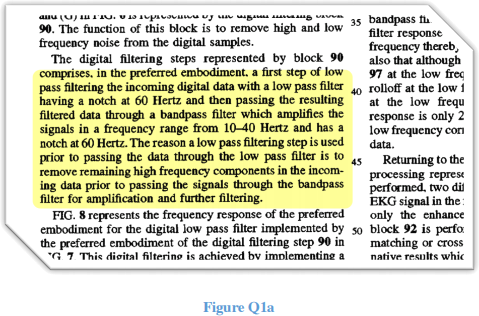
![]() b) Referring the highlighted ECG signal in Figure Q1b , suggest a suitable value for the fundamental frequency, and suggest an appropriate sampling rate to digitise and display the ECG signal. Show how the original continuous time signal could be recovered. N.B. the numbers on the axes in Figure Q1b are not in units of time .
b) Referring the highlighted ECG signal in Figure Q1b , suggest a suitable value for the fundamental frequency, and suggest an appropriate sampling rate to digitise and display the ECG signal. Show how the original continuous time signal could be recovered. N.B. the numbers on the axes in Figure Q1b are not in units of time .
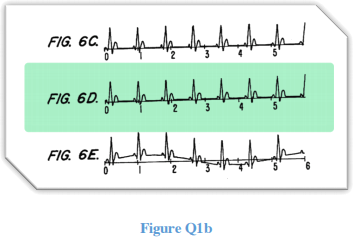
Use suitable sketches and explanations throughout to provide a coherent answer .
c) Referring to the text highlighted in Figure Q1c , use your understanding of autocorrelation to explain how it could be applied to a discrete time signal to estimate the signal’s fundamental frequency.
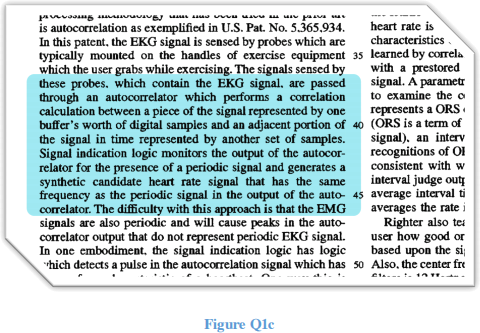
d) Use your understanding of autocorrelation to explain how it could be used to estimate the energy of a discrete time energy signal.
e) Use your understanding of system properties to characterise the two systems expressed mathematically in the highlighted section Figure Q1e , in terms of causality, linearity, time invariance , and memory.
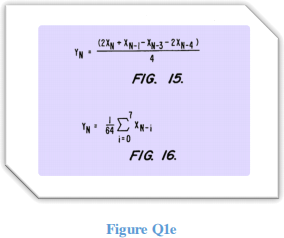
Total 30
2. Consider the signal x (t) generated in the laboratory using a signal generator as shown in Figure Q1 below .
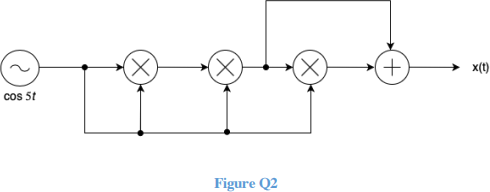
a) Express x (t) mathematically and explain whether it is an even or an odd
function, or neither .
b) Express x (t) as a Fourier Series expansion.
c) Find the power of the highest harmonic .
d) Sketch the magnitude of the first six spectral components, i.e . a! , b! and
C! = *a!(2) + b!(2) for n = 0 to 6 .
Total 25
3.
a) A continuous time signal signal is given by f(t) = e-5ltl.
Find F(幼), the Fourier Transform off(t).
b) Sketch f(t) and F(幼), and comment on whether the signal is band-limited or not.
c) Find the energy of the signal f(t).
d) State Parseval’s Theorem and verify it for the signal f(t) = e-5ltl.
You may find the following integral helpful:

e) Estimate the 99% containment bandwidth (in Hz) for the the signal f(t).
Total 25
4. The input x (t) and impulse response ℎ(t) of a continuous time LTI system are given by

b) Find the system step response s(t) . Sketch this signal.
c) Comment on whether the system is causal and/or static (memoryless).
d) Another (different) LTI system has the impulse response shown in Figure Q3d.
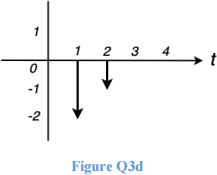
Figure Q3d
Find the transfer function of this system.
e) Referring to the system described in part (d) above, what input signal would
produce the output shown in Figure Q3e.
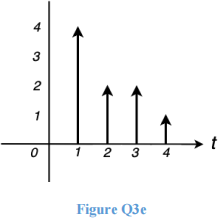
2023-09-04